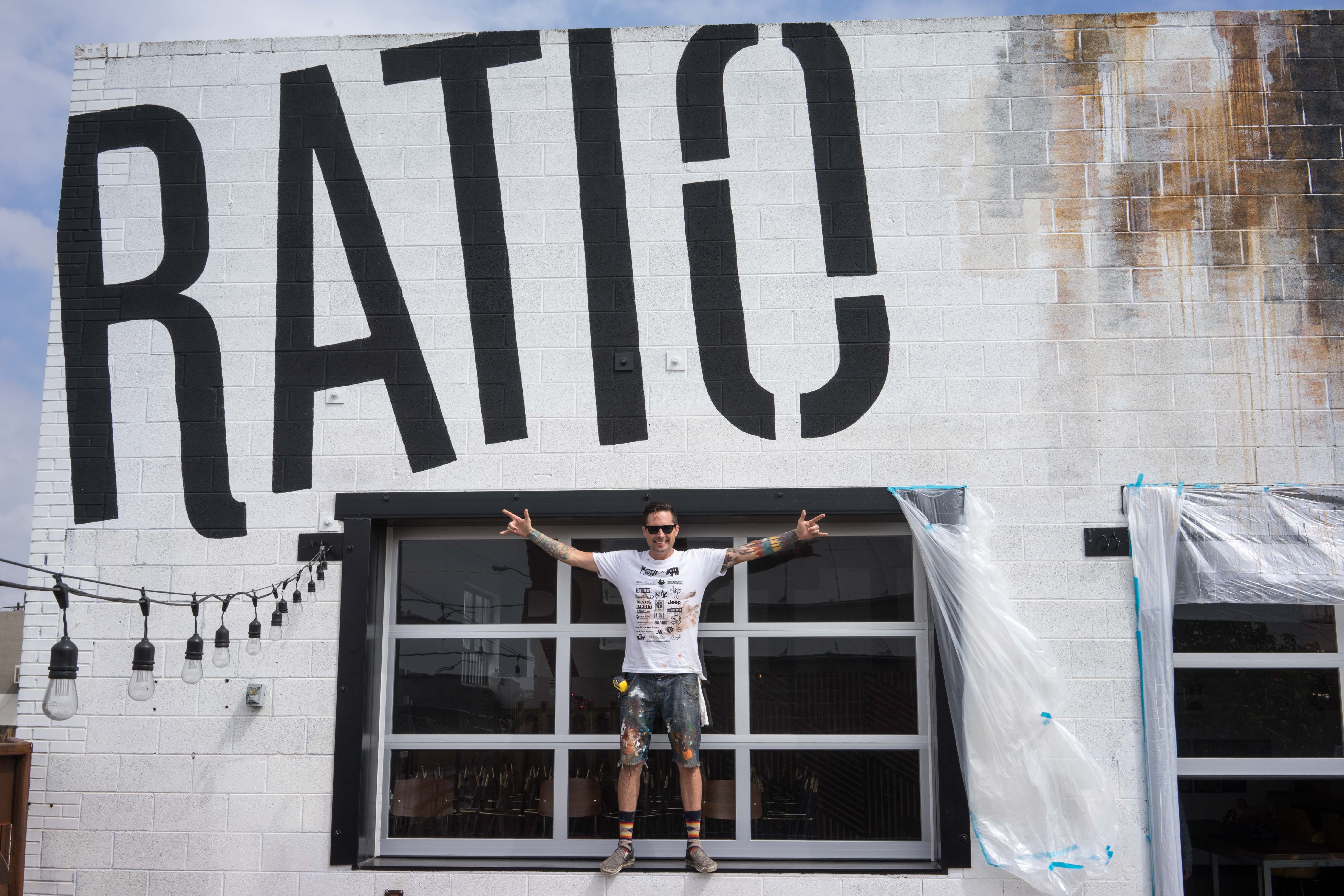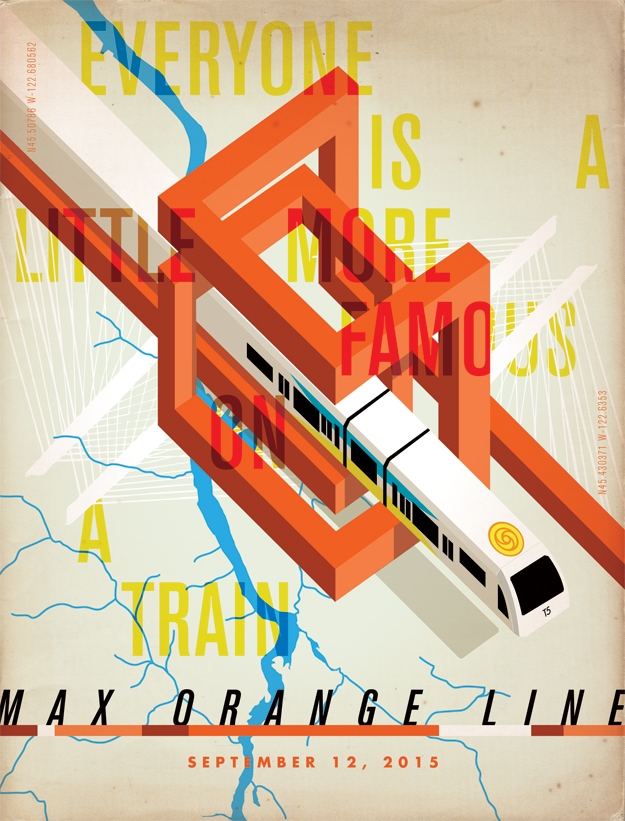This week, over 30 artists will take to the streets of Denver’s River North Art District (RiNo) to participate in the seventh annual Colorado CRUSH— the city’s largest independent street art festival. Concentrated on beautifying the long alleys between Larimer and Walnut, as well as local businesses, the goal of CRUSH is to use street art as “ a catalyst for safety, cleanliness, curb-appeal, creativity, growth, business interest and investment while maintaining the unique cultural identity in this rapidly evolving community.”
Armed with spray cans, brushes and scissor lifts, the initial participants began as a group of locals and have since grown to national multimedia artists. One of those national artists is Blaine Fontana. Based out of Portland, Fontana is internationally recognized for his work and has been commissioned by everyone from Patagonia to Nike and Target. We spoke with Fontana to get an outside perspective on CRUSH, Denver’s street art scene and his own commercial success. Read on to get his perspective, and then make sure to check out his work and others this week through Sunday, September 18.
303 Magazine: You’ve participated in CRUSH for several years now; how did you become involved?
Blaine Fontana: This is my second year with Colorado Crush and I am so honored to have been invited back. Every time I visit Denver, I am always taken back by the burgeoning mural scene, vibrant gallery atmosphere and locals who passionately support all the arts. More recently I was introduced to Jonathan Lamb through a best friend — who is also his very loving partner — Lindsey Hendershot. She is also heavily involved in organizing CRUSH, and connected us when they visited Portland a couple years back. After showing them both around Portland and all the murals the city boasts from worldly talents, I was asked to contribute to the Crush project. Lamb’s contagious enthusiasm for this project and his portrayal of its meaning to the RiNo district and the city of Denver got me on board immediately.
My colleague David Rice and I were honored to be given one of the biggest walls last year and enjoyed the week-long event and city in a whole new way — this time as a muralists. Last year, upon taking painting breaks at Ratio Beerworks, my girlfriend and I couldn’t help but notice the big, beautiful white wall that looms over their outdoor patio. I said to myself, I am going to paint that wall next year. After planting many seeds, numerous emails and a shared passion on behalf of the Ratio team, my girlfriend’s relentless support, Jonathan and Lindsey, this dream is becoming a reality as of today.
303: How does the street art scene in Denver compare to Portland?
BF: As creative and as vibrant Portland is, it can’t be compared to any other city. One key aspect that is unlike any other in the country, it is very tricky to do mural in town. It requires tedious paperwork, permits, approvals and permission forms from the local community. However, I believe this promotes a “quality over quantity” aesthetic that showcases some rock star talents from around the world. I think the Denver street scene is astounding; it is one of the most concentrated street art scenes in the states, and one of the many reasons I look forward to returning and contributing to this explosive movement.
“The easiest way of thinking outside the box is getting rid of it.”
303: Your resume includes working with many major corporate brands like Patagonia, Nike, Quicksilver and Toyota. How do you separate these worlds and why do you continue to do street art?
BF: There is no division between these. My approach, ethic and vision bridge all media. These companies have come to me to embrace my creative vision, extend tremendous trust and have only added strength to my own brand for which I have intensely labored over for nearly 15 years. I don’t see myself as a street artist. I don’t categorize my own career. Fans, followers, friends and clients have always expected the unexpected from me and inspired me to deliver.
303: Because you’ve worked with bigger brands, do people ever call you a “sell out”?
BF: No, never to my face, and if they did I would guess they are either frustrated or jaded by their own creative pursuits. That said, being an obsessive purist can often be one’s own worst enemy. There is no clear definition of what a “sell out” is anyway. In fact, I have been offered very lucrative and potentially rewarding art director jobs at highly respectable companies such as Nike, Felt and Weiden +Kennedy, but I continually turned them down. I answer only to myself, and accept projects that truly push me and inspire me — regardless of the pay. Please don’t misunderstand me though; doing what I do is not easy. It is still a hustle every day and I love it.
303: You call yourself a “creative obstacle assassin.” What is the biggest creative obstacle you’ve overcome and how?
BF: The easiest way of thinking outside the box is getting rid of it. My biggest creative obstacle I overcame is actually having my own career and running a multi-disciplinary studio for almost 15 years, which has taken many different paths and required a commitment to evolution. That is how I survive and thrive, by never pigeonholing myself, and never allowing myself to be categorized. I take risks with every project I do — be it a logo design, art directing a high-end coffee table book, designing and building custom furniture, curating and organizing a benefit, sculpting a piano, making my own limited edition serigraphs or painting a mural for the Denver RiNo community.
303: Tell us about the concept behind the Ratio mural.
BF: It is collision of subtle beer references, homages to sacred geometry, punk/indie music, graphic design, graffiti and painterly, experimental processes. The Ratio team and I carefully revised and fine-tuned the sketch over the course of last month to bridge their past and love of music with the science of brewing and my explorative artistic nature. This mural is unlike any I have ever done before and utilizes nearly all my abilities, craft and styles.
303: What artists’ work are you looking forward to seeing at CRUSH?
BF: Evan Hecox. He will be painting 100 feet away from me on the same block. He was a huge inspiration for me while earning my BFA at Otis college of Art & Design in 2000. I have always wanted to meet this visionary, shake his hand and thank him.
303: In one sentence, tell us why street art is important.
BF: It is accessible to all of humanity.
To learn more about Fontana visit his website at thefontanastudios.com. To see where you can find other street art during the 2016 Crush, go here to view a map.




